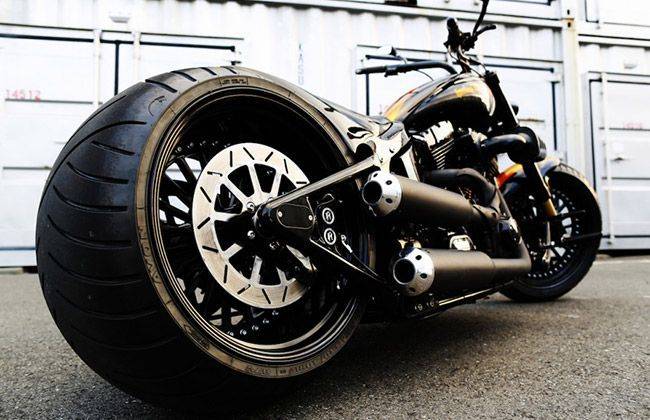What Happens When You Install Wider Tyres On Your Motorcycle?
Modified On Jan, 2025 By Naveen Soni
- 48359 Views

With the rapid proliferation of sporty machines in the country in the last two decades, the need for motorcycles to exude an aura of performance even when standing still is stronger than ever before. And this craze is nowhere as apparent as in the demand for wider tyres in the aftermarket, some even veering into the wildly ludicrous.

But the big question is: Does this really work? Well, let’s do a little digging and find out.
One obvious fact that needs to be reiterated here is that every part of a motorcycle is selected not just for its aesthetic value but because of the utility it brings to the table, and how it gels with the motorcycle as a whole. Rigorously tested and designed to withstand practically everything the average buyer can throw at it, it can be safely said that it is invariably the best bang for the buck at that price – for the most part, for manufacturers do tend to err on the side of cost savings every now and then.

So, if you are replacing any of the parts with a different specification then the prescribed option, you will most probably also have to change some other related parts as well. Most of the time, people don't care about the results and just plonk a fatter tyre on the wheel of their motorcycle, mostly at the rear. Sometimes, this can lead to a flatter contact patch. In this condition, leaning into corners becomes difficult because the shape of the tyre is not as round as it ought to be.

The cross-section of a tyre changes with time and according to the load on the motorcycle. It becomes wider as time goes on or the load increases. Now, another problem that appears after transplanting a fatter tyre on your motorcycle is the space between the swingarm–it remains constant for a particular size of wheels and manufacturers always provide a clearance for some variation in the standard tyre size. So, if you are using a fatter tyre on the same arrangement, there’s a chance that it might start brushing the swingarm after some time, and that will result in drastic wear and tear of both the components, but specially the tyre.
Now, you might be thinking that getting a wider wheel rim along with the fatter tyre is a perfect solution, but no. Even the belt, chain, and drive gear/sprocket may be pulled off centre so it can fit around the wider wheel. This can have a negative effect on the bike’s transmission.
If we talk about the performance of the motorcycle with a wider tyre as compared to the standard one, it will be on the negative side as a bigger contact patch results in more frictional losses, which can be seen in the fuel economy and top speed of the bike. Also, the increased contact surface can increase the effort it takes to handle the bike well.

It is not all gloomy, though. We aren’t trying to dissuade you outright from installing bigger aftermarket tyres on your machine, far from it. Done properly, fatter tyres also offer quite a few advantages over their malnourished factory cousins.
Like we said earlier, wider tyres provide a bigger contact patch, and as a result, one gets better traction on any surface. It directly helps in preventing slippage in the wet, emergency braking, and other extreme conditions.
In addition to this, wide tyres provide a smoother ride, as they are more capable of absorbing the bumps on the road.
At the end of the day, it all boils down to you, the end user, and the compromises you’re willing to live with for the sake of a more aesthetically pleasing bike. Just ensure that you get a tyre from a reputed brand and get it installed from a trusty tyre shop.
